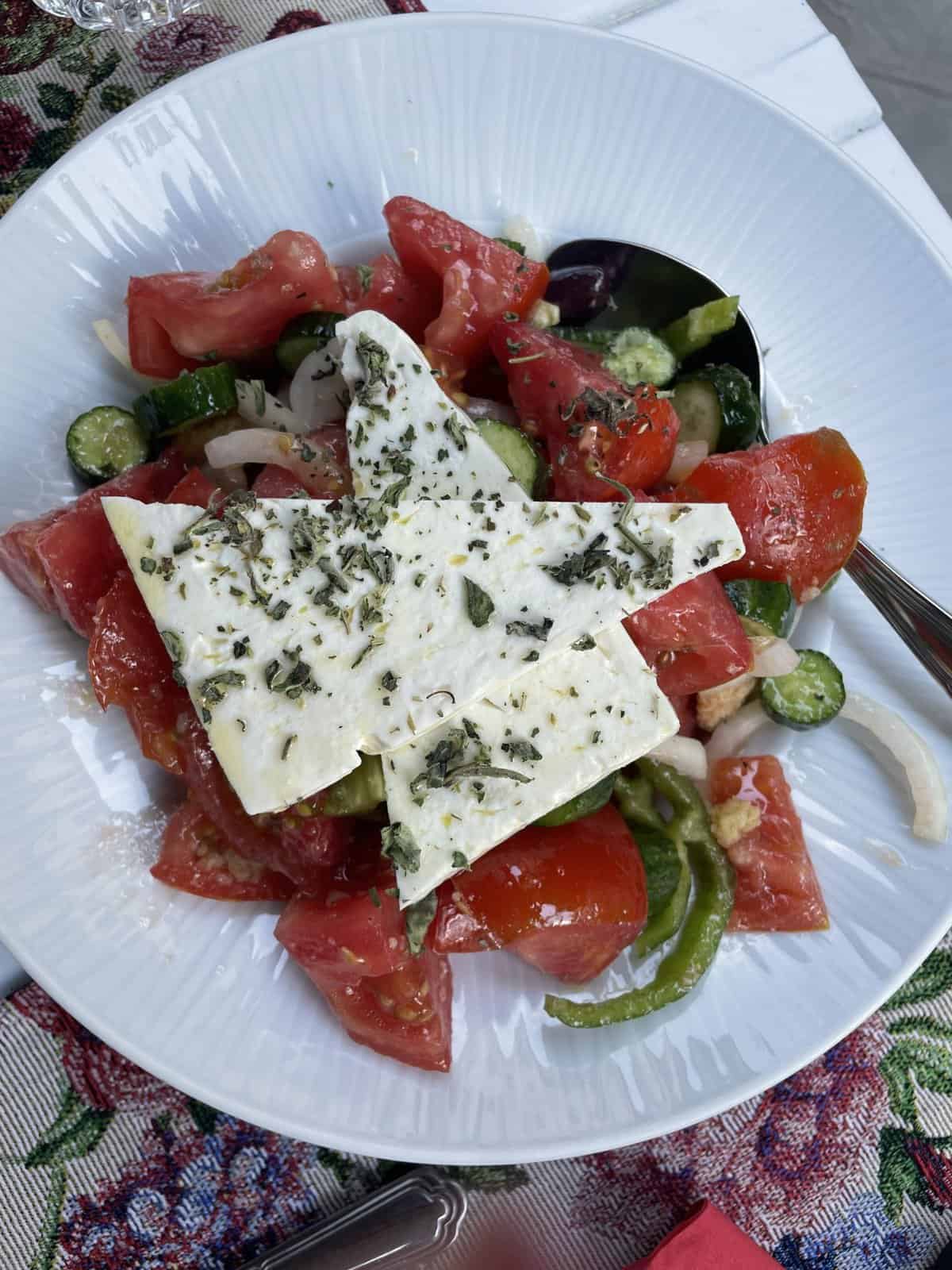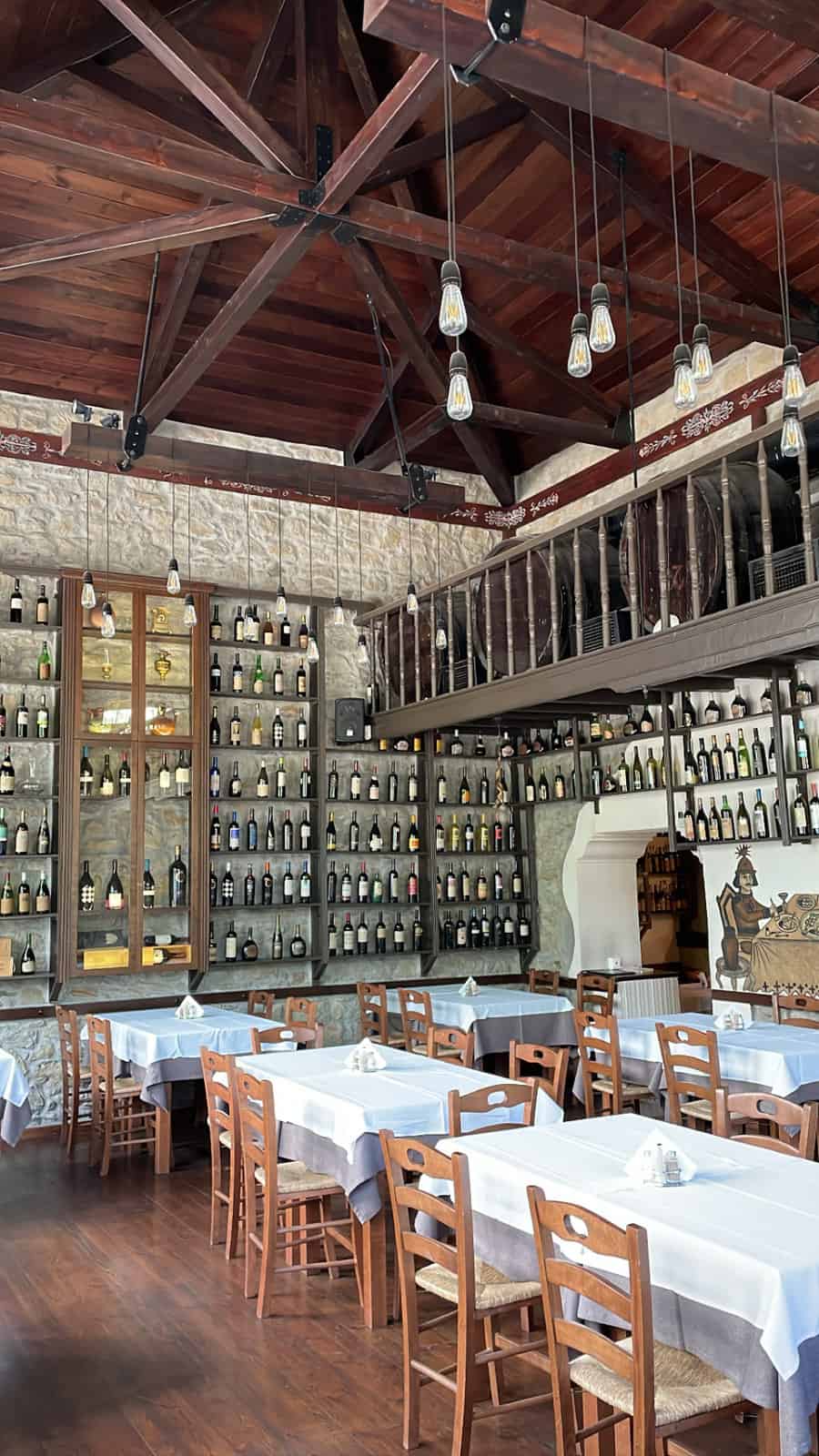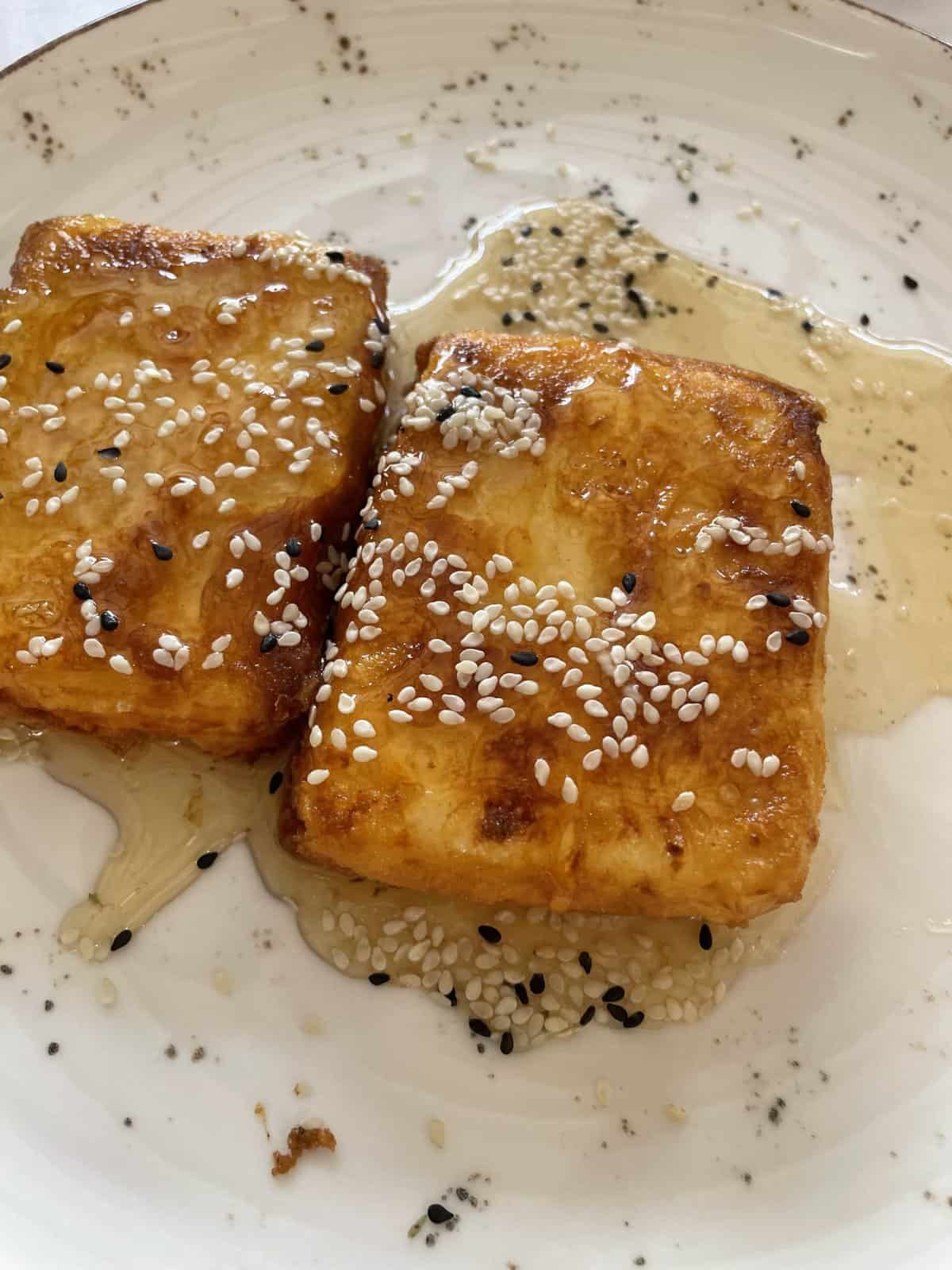
Written and photographed by Kristine Jannuzzi
Feta was famous long before the hype created by the baked pasta recipe that went viral in 2021. But I didn’t realize its roots go all the way back to ancient Greece, and specifically to Homer’s The Odyssey, which mentions a cheese made from sheep’s and goat’s milk by Polyphemus, son of Poseidon, in his cave.
This is one of many fascinating facts I learned during a recent trip to Greece, as part of a program to raise awareness about what distinguishes authentic Greek feta. Over a period of five days, we visited three different producers, explored some of the regions with the highest production of feta—thanks to the rich vegetation and lush pastures—and tasted an incredible array of dishes featuring the cheese that is the country’s flagship national product.
Feta is a Protected Designation of Origin (PDO) cheese, which indicates that its quality and characteristics are tied to the geographical area where it originated. Feta PDO can only be produced in mainland Greece and on the islands of Lesvos, Limnos, and Agios Efstratios. The milk must come from sheep and goats within these areas, and the minimum required aging time for the cheese is two months. In the European Union, “white cheeses” that might look similar in style but are produced with cow’s milk, or made outside of these regions, cannot legally be called feta.
The PDO guidelines call for a minimum of 70-percent sheep’s milk, and up to 30-percent goat’s milk. Cheesemakers vary these ratios depending on availability and/or their own preferred recipes. The length of the maturation period also influences flavor and texture. The first producer we visited, Greek Family Farm, is located in central Greece in the region of Thessaly, which boasts rich natural flora in the pastures where the animals graze. They source milk from their own 3,000 sheep and from other local farmers.



After a tour of the cheesemaking facility and a tasting of their Feta PDO, we had lunch at a lovely seaside restaurant in the town of Nea Anchialos. We started off with the traditional Greek salad, horiatiki (interesting to note that the feta is served on top in a large block rather than crumbled or cubed), and then the dishes just kept on coming: tzatziki; fried zucchini; steamed seasonal greens; fried Graviera cheese; shrimp saganaki with tomatoes, feta, red pepper, and a splash of ouzo (the popular anise-flavored spirit made in Greece and Cyprus); several different types of fish; grilled squid stuffed with melted Kasseri cheese; and for dessert, super thick and creamy yogurt topped with cherries, plus chocolate coated ice cream pops. It was just one of many epic meals over the course of this trip!
The next producer we visited, Olympus, is in Trikala in northwestern Thessaly. It’s a third-generation family-owned company that has become the largest dairy in Greece. Their Feta PDO is produced seasonally, from January through September, and typically contains 90-percent sheep’s milk and 10-percent goat’s milk. The original feta is aged in brine in metal tins for two months, and they also produce feta that is aged for six months in traditional beechwood barrels. The barrel-aged feta tends to be more intense in flavor—tangier and a bit funky.
We spent the last three days of the trip in northern Greece, in and around Thessaloniki, the country’s second largest city and an important trading port. Thessaloniki was named a UNESCO City of Gastronomy in November 2021, and both Eastern and Western influences are evident in its distinctive cuisine. Feta is a prominent ingredient here as well, and I was continually amazed at the versatility of this cheese, and how it is used in so many different dishes.
The classic salad was a daily staple, but we also enjoyed feta wrapped in phyllo, fried, and drizzled with honey and sesame seeds; tossed in scrambled eggs with tomatoes; served with smoked eggplant, red peppers, and basil; coated in granola and seeds and paired with jam; and in a creamy pasta dish with zucchini, lemon, and dill, among many other preparations.



The final producer we visited, Mevgal, has a 70-year history in northern Greece, and sources milk from farms in neighboring areas around its facilities in Koufalia. In addition to Feta PDO, the family-owned company makes other cheeses such as Kasseri PDO and Manouri PDO (the latter is made with whey leftover from feta production, with the addition of milk and cream). We had the opportunity to taste not only these cheeses, but also Mevgal’s staggering array of delicious yogurts.
As we were leaving, the Mevgal team sent us off with the perfect parting gifts: a copy of Homer’s The Odyssey, with the page referencing cheesemaking bookmarked, and a tote bag with an image of the sea, intended to be used on the beach when we return to Greece. I can’t wait for my next visit, and in the meantime, I foresee a lot more feta in my future.




